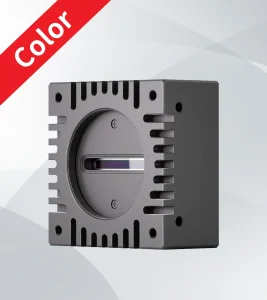Key Features to Consider for the Selection of an Industrial Microscope Camera Resolution Sensor Type Frame Rate Compatibility with microscopes and software systems Even in a high-definition image (standard definition is 1 k), micro and cellular imaging requires detailed imaging, where you can use up to 4 K or more customized cameras for demanding SEMICONDUCTOR INSPECTIONS OR BIOLOGICAL RESEARCH needs. For example, a 2022 study of industrial imaging technology determined that cameras with resolutions <12 megapixels are able to recognise details up to 50% less accurately than those having higher resolution models thus making them best suited for missions in need of high precision.
Another important factor is the frame rate. Frame Rates — Many industrial microscope cameras have frame rates as high at 30–120 frames per second (fps). For dynamic or high-speed processes, an image capture of 60 fps and above is required to acquire sharp images also during movement. Manufacturers of printed circuit boards (PCBs), for example, are using high speed cameras to identify minor imperfections in the manufacturing process and detect defects while minimizing inspection time by 40 percent. The Sony IMX183 sensor, for instance — an example of a high-resolution with fast frame rates performer that is adept at detailed observations and live inspections.
It is necessary to have any proper integration of the software and microscope setup. Several cameras offer USB 3.0, USB type C or HD video output which make it possible to connect the camera with computer systems and microscopes. For example, cameras within the U3P Series are equipped with USB 3.0 ports that enable data transfer rates of up to 5 Gbps—virtually eliminating latency in high-definition video streaming and making it possible for live observation to be used effectively in laboratory environments National Instruments notes that the high data transfer rates reduce latency by 30%, improving operational efficiency.

Picking a camera with the right sensor technology - CMOS or CCD sensors for example - can contribute significantly to image quality. As someone who shoots a lot in low light, good image quality with minimal noise has important for my work and that claim of better still frame images is coming from the traditional strength of CCD sensor tech. On the other hand, CMOS sensors have traditionally been used to take advantage of their lower power and cost in fast applications. Around 85% of industrial microscope cameras use a CMOS sensor as it is cheaper and works effectively in the various areas where improvements still need to be made. This trend highlights the need to choose a particular sensor type suitable for your needs.
Industry-specific analyses also determine possible software compatibility issues: ease-of-use is a major consideration, particularly for software appropriate to industries where complex analysis and multiple land parcels are common. Various industrial microscope camera such as the U3P Series also have a dedicated software that offers image enhancement, measurement and data sharing functionalities. Leica and Zeiss are two examples of companies that have shown how adding high-end imaging software can improve measurement accuracy by 25% or so while reducing analysis effort.